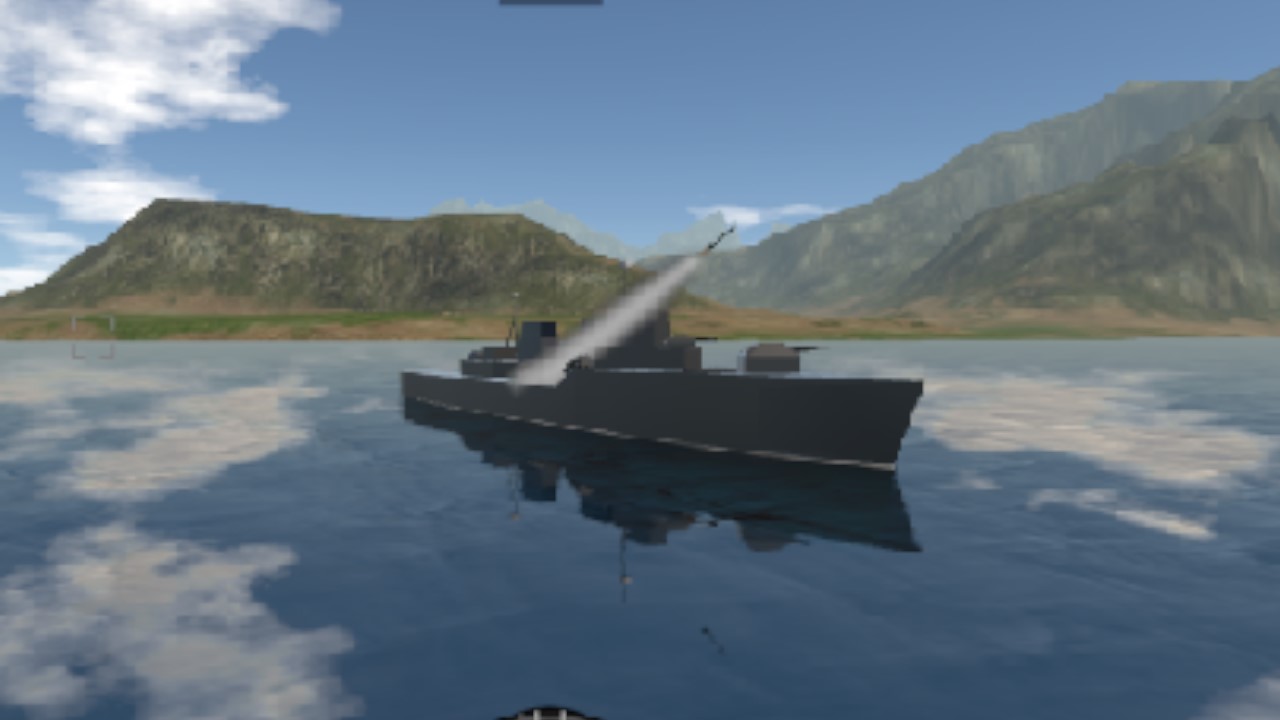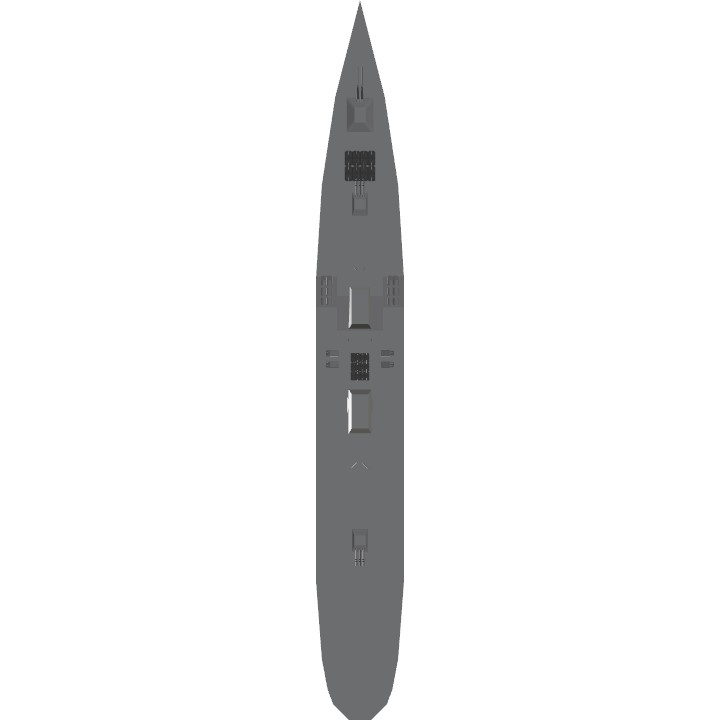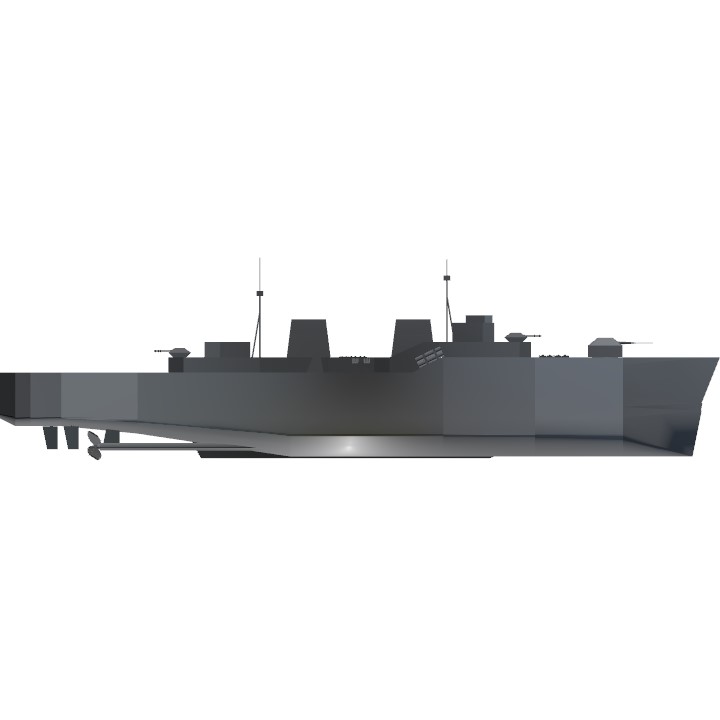The Type-1A ship design report did not call for a class of destroyer escorts or similar vessels for the JINA, but after observers abroad witnessed the deployment of frigates and/or destroyer escorts within other countries' navies, as well as their deployment in anti-piracy/escort operations, the Imperial Naval Arm called for the Diet to allow for a class of guided-missile armed escort vessels to be constructed for blue-water escort operations, replacing Japan's earlier kaibokan in the escort role, both coastal and deep-water, leaving the role of patrolling Japanese waters to the newly-created Coast Guard. The Ashita-class guided-missile frigates were a result of that order, as well as the first class of true frigates to operate within Japanesse fleets.
As neither the Imperial Japanese Navy nor the Japanese Imperial Naval Arm had ever operated a frigate class before, a new naming convention was created for these vessels, naming them for poetic names and phrases, historical kaibokan, torpedo boats, and destroyers constructed before the Special-Type destroyers of the Second World War.
100 ships have been liscenced by Dresia to operate within their navy, and were given the designation 'Type-D frigate' by Dresian officials^. Another 100 have been ordered by the Commonwealth of Swann to be operated as the Divergence-class frigates. The Navy of the Republic of Vietnam also operates four vessels under the classification of KY-212. Olso also operates 200 vessels under the classification of Type-A
Class overview
Manufacturer: Enoshima Fleet Yards, Kure Naval Arsenal, Maizuru Fleet Yards, Nagasaki Naval Yards
Operators: Japanese Imperial Naval Arm, Dresia Federal Navy, Swann Maritime Defense Force, Navy of the Republic of Vietnam, Oslo Royal Navy
Preceded by: Type-C-class, Type-D-class
Succeeded by: Type-1B frigate (planned)
Subclasses: Type-D-class, Divergence-class, KY-212-class, Type-A-class
Built: 1967-1975
In commision: 1968-present
Ordered: 64
Completed: 64
Commissioned: 56
General characteristics
Type: Guided-missile frigate
Displacement: ~2,700 tons standard
Length: 117.8m (386 ft 6 in)
Beam: 14.4m (47 ft 1 in)
Installed power: 4 Kampon water-tube boilers (44,000 shp, 32,500 kW)
Propulsion: 2 shafts, turbo-electric, 4 high-pressure geared impulse turbines
Top speed: 32 knots (59.5 km/h; 37 mph)
Range: 8,000 nmi (15,000 km; 9,200 mi) at 21 knots
Armor: 37mm waterline and deck, 25mm superstructure, Kevlar anti-splinter plating
Aviation facilities: space to land a chopper
Aircraft carried: 1x helicopter (theoratical)
Sensors, processing systems, and electronic equipment
Type 60 air/surface search radar (4 arrays)
Type 57 sonar array (4 emitters, 4 recievers)
Type 57 towed sonar emitters (4 emitters)
Type 64 fire-control radar (2 mounts fore and aft, retractable)
Type 64 Eihei intergrated combat system (lit. Sentry)
Electronic warfare & decoys
Type 57 flare launchers (2 launchers)
Type 58 sonar interference emitters (4 emitters)
Type 57 electronic warfare system (4 emitters)
Type 62 towed torpedo countermeasures (4 modules)
Armament
1x Type 98 100mm/65 naval gun (twin mount)
2x Type 68 close-in weapon system
8x Type 57 anti-ship missiles (2 quad canisters)
36x Type 58 anti-submarine missiles (4 9-cell canisters)
Type 64 vertical launch system (16 cells)
Type 64 anti-ship-anti-air missile
Type 58 land-attack cruise missile
Type 57 anti-ship missile
Type 63 anti-submarine missile
Type 62 anti-supersonic missile
Type 68 vertical launch system (24 cells)
Type 59 anti-submarine missile
Type 57 anti-ship missile
Ships of the line
note: only ships built for Japan were listed. Export vessels were named by the purchasing nations.
JS Ashita (FFG-001, 1968)
JS Hikari (FFG-002, 1968)
JS Tashika (FFG-003, 1968)
JS Omoide (FFG-004, 1968)
JS Kichona (FFG-005, 1968)
JS Yuki (FFG-006, 1968)
JS Shimushu (FFG-007, 1968)
JS Kunashiri (FFG-008, 1968)
JS Ishigaki (FFG-009, 1969)
JS Hachijo (FFG-010, 1969)
JS Etorofu (FFG-011, 1969)
JS Matsuwa (FFG-012, 1969)
JS Sado (FFG-013, 1969)
JS Oki (FFG-014, 1969)
JS Matsure (FFG-015, 1969)
JS Iki (FFG-016, 1969)
JS Wakamiya (FFG-017, 1970)
JS Hirado (FFG-018, 1970)
JS Fukae (FFG-019, 1970)
JS Amakusa (FFG-020, 1970)
JS Manju (FFG-021, 1970)
JS Kanju (FFG-022, 1970)
JS Kasado (FFG-023, 1970)
JS Sora (FFG-024, 1970)
JS Mikura (FFG-025, 1971)
JS Miyake (FFG-026, 1971)
JS Awaji (FFG-027, 1971)
JS Nomi (FFG-028, 1971)
JS Kurahashi (FFG-029, 1971)
JS Chiburi (FFG-030, 1971)
JS Yashiro (FFG-031, 1971)
JS Kusagaki (FFG-032, 1971)
JS Hiburi (FFG-033, 1972)
JS Ukuru (FFG-034, 1972)
JS Daito (FFG-035, 1972)
JS Okinawa (FFG-036, 1972)
JS Amami (FFG-037, 1972)
JS Aguni (FFG-038, 1972)
JS Shinnan (FFG-039, 1972)
JS Shonan (FFG-040, 1972)
JS Inagi (FFG-041, 1973)
JS Habushi (FFG-042, 1973)
JS Ojika (FFG-043, 1973)
JS Kanawa (FFG-044, 1973)
JS Uku (FFG-045, 1973)
JS Takane (FFG-046, 1973)
JS Kuga (FFG-047, 1973)
JS Shiga (FFG-048, 1973)
JS Iwo (FFG-049, 1974)
JS Yaku (FFG-050, 1974)
JS Kume (FFG-051, 1974)
JS Chikubu (FFG-052, 1974)
JS Ikuna (FFG-053, 1974)
JS Kozu (FFG-054, 1974)
JS Hodaka (FFG-055, 1974)
JS Shisaka (FFG-056, 1974)
JS Ikara (FFG-057, 1975)
JS Sakito (FFG-058, 1975)
JS Ikuno (FFG-059, 1975)
JS Mokuto (FFG-060, 1975)
JS Habuto (FFG-061, 1975)
JS Murotsu (FFG-062, 1975)
JS Urumi (FFG-063, 1975)
JS Tomoshiri (FFG-064, 1975)
Controls
Throttle + Yaw: Piloting the ship
AG1: nothing, since no chopper
^as no formal name for the subclass has been confirmed, the following designation is presumed
Specifications
General Characteristics
- Predecessor War Challenge United Season 1: Red Storm Rising(CHALLENGE CLOSED)
- Created On Windows
- Wingspan 47.2ft (14.4m)
- Length 386.3ft (117.8m)
- Height 109.9ft (33.5m)
- Empty Weight 44,090lbs (19,999kg)
- Loaded Weight 146,702lbs (66,543kg)
Performance
- Horse Power/Weight Ratio 0.013
- Wing Loading 55.0lbs/ft2 (268.4kg/m2)
- Wing Area 2,669.1ft2 (248.0m2)
- Drag Points 2245
Parts
- Number of Parts 235
- Control Surfaces 0
- Performance Cost 1,220






